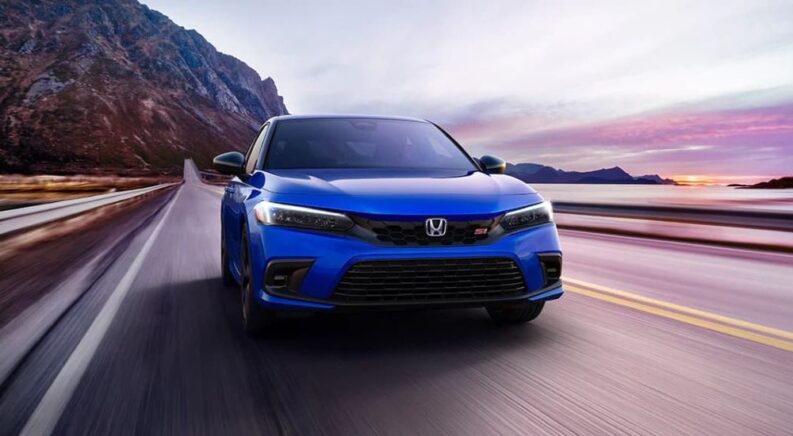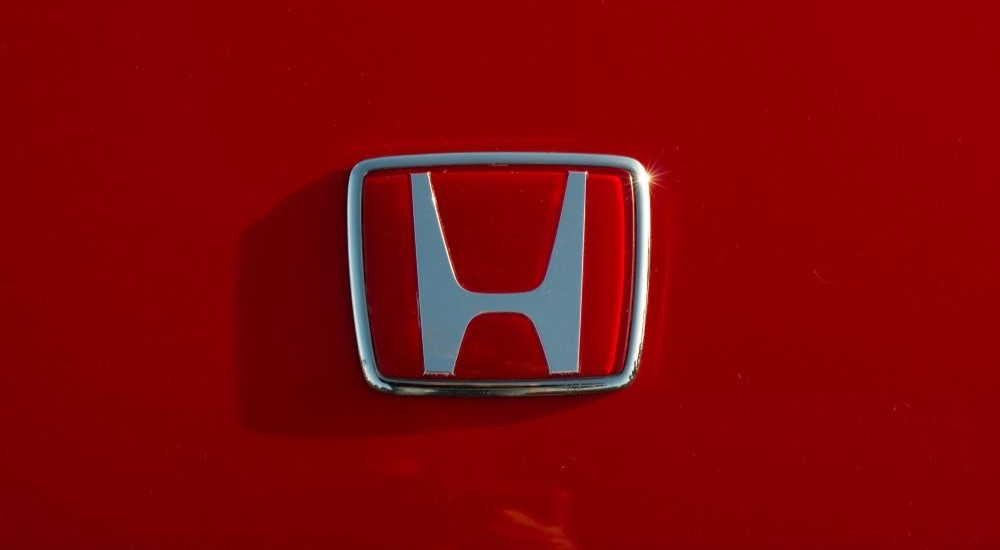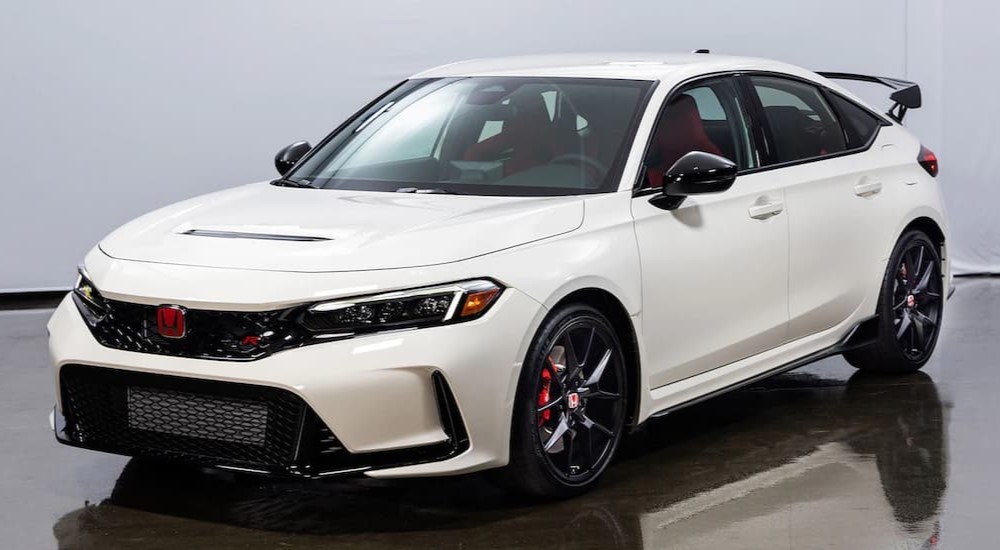Honda might be known as one of the more reliable, affordable brands on the market, but that doesn’t mean they don’t know a few things about speed. Most drivers browsing their local Honda dealer are probably familiar with the automaker’s current performance-focused offerings in the Civic Si and Civic Type R, but those only represent the tip of the iceberg when it comes to this company’s high-speed history.
Every decade has its own signature Honda performance model, from the S800 of the 1960s to the CRX Si in the ’80s, the S2000 in the late ’90s, and the modern supercar that is the Honda NSX. These sporty vehicles provide the perfect showcase for Honda’s engineering prowess, allowing the automaker to test out new technology, engage in some ambitious automotive experiments, and inspire a little competition on the performance end of the market.
If you’ve ever lusted after the prototypical supercar that is the McLaren F1, you owe Honda a debt of gratitude as it’s said to be directly responsible for inspiring some aspects of the million-dollar model. Join us as we take a look at Honda’s impressive run in the performance segment and learn what the future might hold for fans of this Japanese brand.
S800 (1966)
Horsepower: 70
Zero-to-Sixty: 11.9 seconds
Notable Wins: 1970 Fuji 1000km GT-1 class
With the ubiquity of popular models like the Civic, Accord, and CR-V, many don’t realize that Honda started off as a motorcycle brand. The Japanese automaker made its foray into the world of four-wheeled vehicles in 1963 when it introduced the T360 Kei pickup and the S500, a small, two-seat roadster. The original S500 might be a little underpowered by today’s standards—with 44 hp and a zero-to-sixty time of 13 seconds—but it was a revelation in the early ’60s and allowed Honda to immediately establish a presence in the passenger vehicle market.
The S500 has gone down in history as a classic thanks to its lightweight and slick styling, but it’s the roadster’s direct descendent in the S800 that earns a spot on our list. The success of the S500 inspired founder Soichiro Honda to experiment with larger engines, resulting in the S600 and, in 1966, the Honda S800. The rear-wheel-drive sports car was built around a 791-cc DOHC four-cylinder engine that churned out 60% more power than the S500 at 70 hp.
The S800 was the first Honda model capable of reaching 100 mph and, at 9,500 RPM, was the fastest-revving sports car of its time. Its 12-second zero-to-sixty time wouldn’t win you any drag races these days, but it was good enough to notch a few podium finishes, including a GT-1 class win at the 1970 Fuji 1000km race. The S800 followed the “low stance, long hood, small deck” formula established by the S500, resulting in a classy ride that was just as stylish and it was fun to drive.
CRX Si (1985)
Horsepower: 108
Zero-to-Sixty: 8.5 seconds
Notable Wins: 1985, ’86, ’87 Sports Car Club of America’s (SCCA) GT-4 class
Hitting the streets in 1985, the Honda CRX Si is notable for both its style and some of the unique components under its hood. Honda gave the standard CRX a sporty makeover with the addition of fuel injection technology and fully independent double wishbones on all four wheels. This allowed the CRX Si to offer significantly more horsepower than the base CRX, while the new suspension went a long way toward increasing responsiveness and ride quality. Add in a five-speed manual transmission, and you’ve got a sport compact that could speed from zero to sixty in just 8.5 seconds.
The CRX Si would find some early success at the track, earning three consecutive GT-4 class wins from the Sports Car Club of America. It was also treated to a number of upgrades that—while pretty pedestrian by today’s standards—represented significant advancements for the time. A rear windshield wiper and sunroof might have blown some minds in the mid-1980s, but it’s the CRX Si’s Alfa Romeo Junior-inspired styling that has made this model such a hot ticket among collectors. Well-maintained models have been known to fetch as much as $15,000 on the classic car market, which is a pretty impressive figure when you consider that this compact retailed for just under $8,000 when it was new.
S2000 (1999)
Horsepower: 237
Zero-to-Sixty: 6.2 seconds
Notable Wins: Multiple championships at Super Taikyu Series, class wins at Nürburgring 24 Hours and Tokachi 24 Hours races
Some of the models we’ve covered so far have taken a more clandestine approach to the performance segment, belying their athleticism with bodies that don’t look terribly different from some of the stock models on which they’re based. The S2000 is not one of those models. This car wore its sportiness proudly, with Honda crafting a sleek, aerodynamic body that just screamed speed—and it leveraged Honda’s VTEC engine to propel itself into the spotlight, earning wins at some of motorsport’s most storied races like the Nürburgring 24 Hours and Tokachi 24 Hours races.
A six-speed manual transmission was paired with a 2.0-liter (and later, 2.2-liter) naturally-aspirated four-cylinder engine to get 237 hp and 153 lb-ft of torque. That’s enough get-up-and-go for a zero-to-sixty time of 6.8 seconds—but the engine wasn’t the only piece of advanced tech that made the S2000 such an icon. This sports car was also fitted with electrically assisted steering, carbon fiber brass synchronizers, and LED taillights—components that were all well ahead of their time for a vehicle produced in the late 1990s.
Rear-wheel drive, a limited-slip differential, and 50:50 weight distribution made the S2000 a beast on the track, but there was one drawback: in order to achieve peak power, the sports car had to be revved as high as 6,000 RPM. That’s not a huge ask of an engine that boasts a redline of 9,000 RPM, but it does mean that drivers had to find a wide-open stretch of road if they really wanted to put the S2000 through its paces.
The S2000 is easily one of the more accomplished models on our list, regularly placing high at top-tier events like the Super Taikyu Endurance Championship and the British GT Championship. The S2000 also etched its name into the history books when it set multiple records at Japan’s Tsukuba Circuit in 2004. Sadly, the S2000 has been discontinued since 2009, but it’s fun to imagine how thrilling a revived model with a little forced induction (or even some electrical assistance) might be.
NSX (2017)
Horsepower: 573 (or 602 for the Type S)
Zero-to-Sixty: 3.1 (or 2.9 for the Type S)
Notable Wins: 2017 GT class win at the Road Americas Pirelli World Challenge Championship race, 2019 GT class win at 12 Hours of Sebring, GT class win at 2018 Long Beach Grand Prix
No list of Honda’s best performance models would be complete without mentioning the NSX, although it was technically marketed as an Acura here in the US. The first-generation model has one of the auto industry’s more unique origin stories: inspired by the cockpit of the F-16 fighter jet and developed in collaboration with Formula One champ Aryton Senna, the NSX is responsible for one of motorsport’s most iconic models in the McLaren F1 supercar.
F1 creator Gordon Murray was said to be inspired by this sporty Honda and even based the McLaren’s chassis on its aluminum monocoque. Some credit the NSX with inspiring the high-performance war that would eventually culminate in supercars like the Ferrari F50, Porsche GT1, Lotus Esprit V8, and Lamborghini Diablo. The NSX’s performance was so legendary that this sports car is widely credited with bringing Honda’s luxury- and performance-focused Acura sub-brand into the mainstream of the North American market.
While the original NSX is certainly an important cultural touchstone, we want to focus on the unhinged performance cred of the second-gen model. An 11-year gap between the first and second generations gave Honda plenty of time to innovate—and innovate they did. When the new NSX was introduced in 2017, it bore both modern styling and a hybrid powertrain that was capable of producing 573 hp and 476 lb-ft of torque. Three electric motors—two for the front wheels and one for the crankshaft—teamed up with a 3.5-liter twin-turbocharged V6 to make the NSX one of the fastest supercars on the market, not to mention one of the most efficient.
While those who can afford a $150,000-plus sports car aren’t generally too worried about fuel prices, the NSX can skip the gas station altogether with an electric-only range of almost 20 miles. That’s not going to get you too far, but the hybrid’s all-electric range does come with one distinct benefit: it allows the 600-hp beast to run almost silently, which can make for a more comfortable (and less obnoxious) jaunt around town. Some performance purists might have been put off by the hybridization of the beloved NSX, but it’s hard to argue with the numbers.
The second-gen NSX is also noted for being on the more comfortable and practical side of the supercar spectrum, with a smooth ride and well-appointed cabin that isn’t nearly as cramped as some of its competitors. Honda introduced an even sportier variant dubbed the Type S in 2022, upping the horsepower to 602 and shaving 0.2 seconds off the sprint time; this easily makes the NSX Type S the fastest Honda on today’s market—but it might not hold onto that title for too long. An all-electric supercar set to hit the market in 2026 will likely take a lot of inspiration from the NSX, though it’ll likely bear Honda’s new 0 Series performance EV moniker.
A Long Legacy of Honda Performance
Honda’s extensive background in the performance segment will come as no surprise to those who are familiar with the automaker’s history, but a little refresher never hurts. From the S800 and CRX Si to the S2000 and NSX, these four Honda models show just how much progress the brand has made over the years. Today, Honda’s R Type and Si variants do most of the heavy lifting to maintain the brand’s reputation for performance.
Models like the Civic Si and Type R are a regular feature at track days, car shows, and street races, and they’ve steadily become an inexorable part of tuner culture. The relative affordability of these sporty models makes them the perfect launching point for drivers to realize their automotive dreams. There were even a few Type R and Si models that probably could have found their way onto this list had we chosen to take a more contemporary approach, but there’s always next time.






